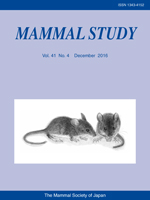Detailed knowledge of the population of humpback whales (Megaptera novaeangliae) in Okinawa is important for conservation management in this area; however, information on the spatial distribution of this population is limited. In this study, we investigated the distribution of whales using data on the sighting locations, water depth, and reproductive status of whales collected over 21 years in the area of Kerama and Ie Islands, Okinawa, Japan, one of the breeding grounds in the Western North Pacific. Of 1,402 whales that were photo-identified (856 males, 100 singers, 150 females, and 296 females with a calf), males, females, and singers were mainly distributed in deep offshore waters, while females with a calf were distributed in shallow interisland waters. The results suggest that certain reproductive activities, such as mating behavior or competition among males over females to mate, might occur in the offshore northern waters of Kerama Islands and western waters of Ie Island, while nurturing occurred in the interisland waters of Kerama and Ie Islands. Overall, these findings will contribute to the development of sustainable whale watching management plan in this area.
How to translate text using browser tools
1 December 2016
Spatial Distribution and Habitat Use Patterns of Humpback Whales in Okinawa, Japan
Nozomi Kobayashi,
Haruna Okabe,
Isao Kawazu,
Naoto Higashi,
Hirokazu Miyahara,
Hidehiro Kato,
Senzo Uchida

Mammal Study
Vol. 41 • No. 4
December 2016
Vol. 41 • No. 4
December 2016
breeding ground
Humpback Whale
Okinawa
reproductive status
spatial distribution




